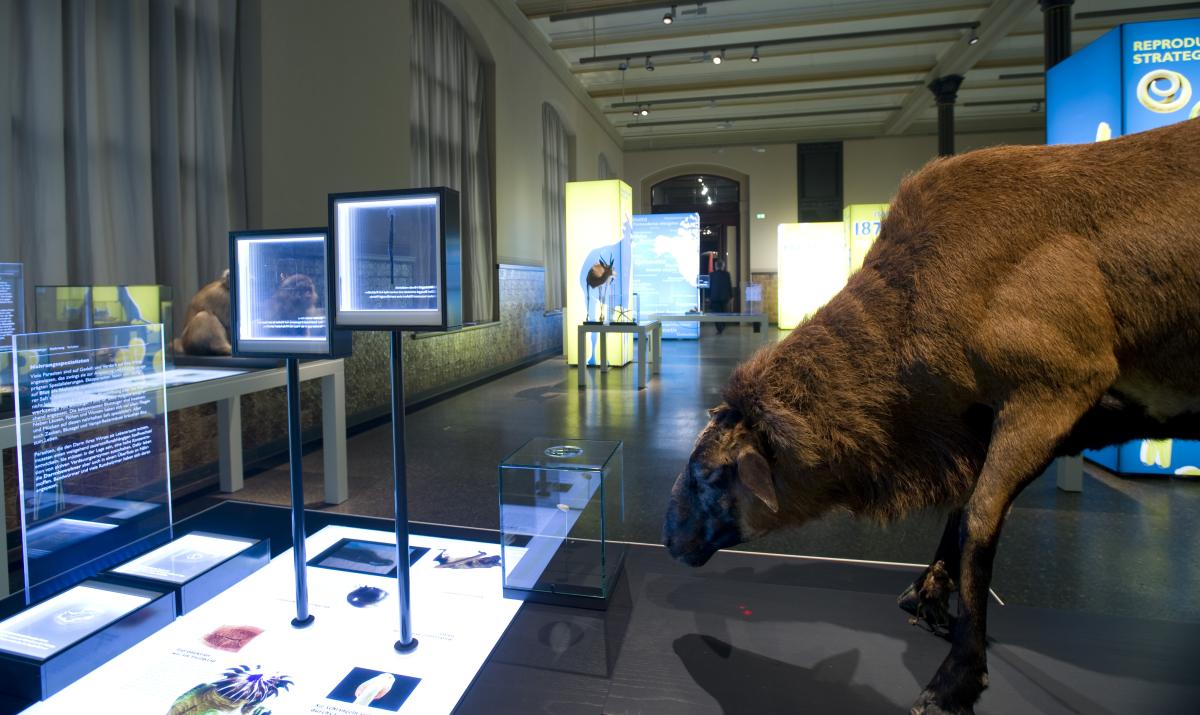In the exhibition "Parasites - Life Undercover" interested visitors can discover the world of parasites in the Museum für NaturkundeBerlin from 7 July 2020. The constant race of adaptation and counter-adaptation between host and parasite results in the most incredible survival strategies and lifestyles. This makes them exciting objects of research. The exhibition also provides a topical link to the corona pandemic and gives researchers from various fields a chance to have their say, including the well-known virologist Christian Drosten and the bat researcher Mirjam Knörnschild. Visitors will also learn why fossils, such as the skull of T. rex Tristan Otto, can help to better understand the evolution of today's diseases and why the digitalization of the museum's research collection is an important step towards answering future research questions and social challenges.
The current corona pandemic clearly shows that despite technology and progress, we are part of nature and our survival is closely linked to it. The appearance of the novel corona virus is not an isolated case; rather, our history has always been closely linked with pathogens.
Popular creatures are not head lice, tapeworms, ticks and other parasites, but they have developed highly interesting adaptations to their way of life and are regarded as the motor of evolution. Humans are afflicted by more than 50 species of parasites that suck their blood, move on their fur and eat their intestinal contents. Some parasites transmit dangerous diseases, others are simply annoying. Starting from parasites, the special exhibition will draw attention to the highly topical issue of the global threat posed by old and new pathogens and their vectors, the occurrence of which is encouraged by climate change, urbanisation and globalisation.
In addition to the true-to-original replica of the skull of Tyrannosaurus rex Tristan Otto, preparations and plastinates of parasites and their hosts, which could hardly look any more lifelike, are fascinating. There are fish fillets with herring worms, American giant liver rules, leeches, ticks, bugs and worms, a large model of a malaria mosquito or, for example, a vampire bat sucking blood on a sheep. Eye to eye with bedbug, tapeworm and vampire bat, the exhibition visit inspires us to think not only about parasites & co. but also about our own role in nature.
Topics and questions:
Parasites and climate change: Will we soon have malaria mosquitoes in Germany due to increasing warming? How do ticks spread due to climate change? And what souvenirs of a parasitic nature do we bring back from our travels?
Evolution of parasites: What does a T. rex skull have to do with parasites?
Is there any fossil evidence of parasites? How did parasites evolve during evolution?
Reproduction strategies: Do amoebas have sex? How many eggs does a tapeworm produce?
Parasites and pets: What parasites infest our farm animals? How dangerous are rats as disease carriers in the city? Can you get infected by dog and cat parasites when cuddling?
Parasites in medicine: For which diseases are worms available on prescription and when is maggot therapy prescribed?
Externally controlled by parasites: Can parasites influence the behaviour of animals and humans if they are infested?
Spectacular adaptation of parasites: What makes the flea successful? Why do head lice feel comfortable in daycare centres? How does the tick find its host?
Human parasites: Who does the human live with? How can malaria mosquitoes in research collections provide new insights into the spread of the disease?
Urban habitats: Which diseases are transmitted by wild animals in the city? Which parasites live with us in living areas? How do epidemics spread in large cities? Are bats dangerous for us? When does transmission from animal to human take place? And what does this have to do with our attitude towards nature?
Information about the visit:
Entry is only possible with an online ticket. Online time slot tickets can be booked via the homepage.
A compilation of the digital offers for the preparation and follow-up of the visit including the parasite exhibition can be found here:
Photos for free use in connection with the press release are available here:
http://download.naturkundemuseum-berlin.de/presse/Parasitenausstellung2…
